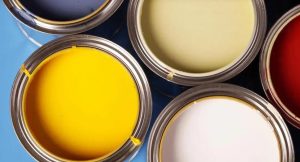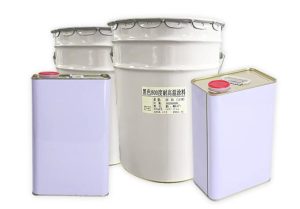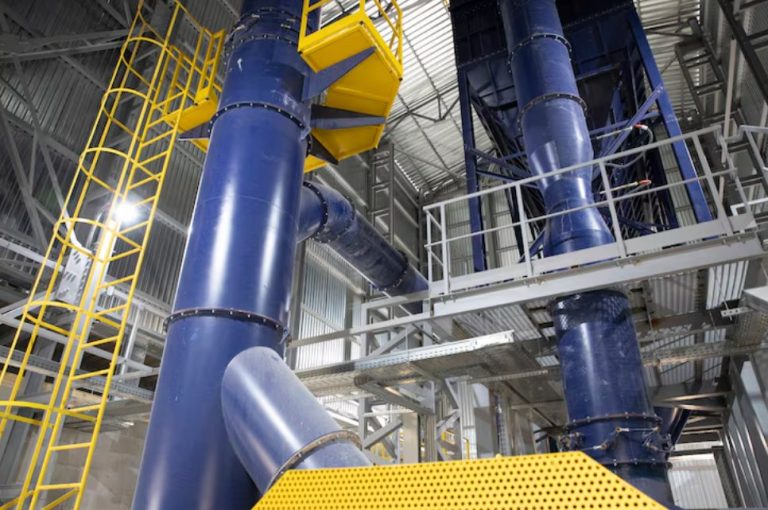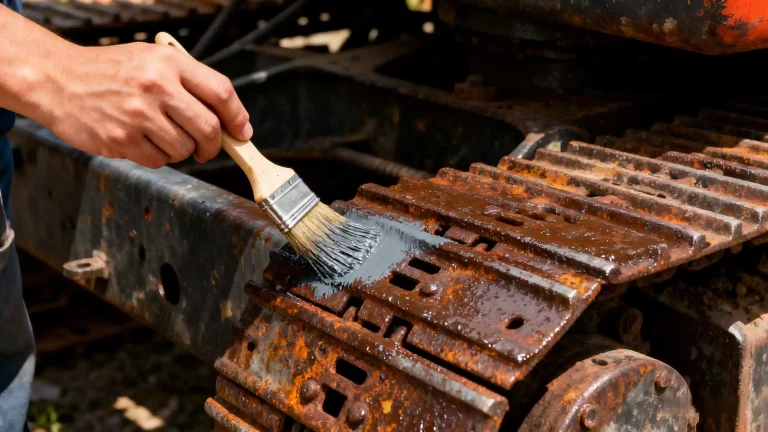
Heat resistant coatings shield surfaces from intense thermal stress. They ensure long life in demanding work settings. These solutions fight oxidation, corrosion, and material weakening. Options range from silicone-based paints to ceramic barriers. Konaz Technology leads with new formulas. These are made for heat reaching 800°C and more.
What Are Heat Resistant Coatings and How Do They Work?
Heat resistant coatings are designed solutions. They protect surfaces facing intense heat. These special coverings are essential. They guard materials in industries with intense heat.
Definition and Key Characteristics of Heat Resistant Coatings
Heat resistant coatings are special paints or finishes. They bear high heat without breaking down. High-temperature resistant paint is a unique covering with great heat endurance. It stands up to settings near 800°C. It avoids cracking, flaking, or changing its look. They keep strong. Their look stays good even in long heat exposure.
Mechanisms Behind Thermal Resistance
These coatings work well because they manage intense heat. They can reflect, spread out, or simply bear the heat. This happens using stable resins and fillers. These stop heat damage and layer separation. Outstanding heat endurance: Handles 800°C or higher for long periods. The covering won’t peel or powder. It stays reliable over time.
Common Materials Used in Heat Resistant Formulations
These coverings often contain silicone resins, epoxy-phenolic mixes, and ceramic bits. As a special paint, high-temperature resistant coatings endure 200–800°C+. They stick well, resist bubbling/flaking, and last long. Additives like aluminum bits or zinc boost reflection and rust fighting.
Konaz knows thermal steadiness is vital in tough settings. Their formulas focus on stopping peeling, color change, and oxidation under extreme heat. These are major worries for industry users.
What Are the Different Types of Heat Resistant Coatings Available?
Different heat resistant coatings suit specific heat levels and uses across fields.
Silicone-Based Coatings
Silicone-based systems are very common. They are flexible and tolerate high heat. For example, silicone high-temperature resistant paint like Konaz’s can long-term bear 200℃~800℃. It sticks strongly, fights decay, prevents rust, and lasts well. They work best on metal parts facing constant heating.
Epoxy-Phenolic Systems
Epoxy-phenolic coverings balance chemical fight and moderate heat tolerance (usually to 250°C). They are often used in chemical plants. There, both decay guard and heat resistance are needed.
Ceramic-Based Thermal Barrier Coatings
Ceramic-based coverings give superb insulation. They form a shield that cuts heat movement. They are typically used in aerospace or turbines. These places face massive heat loads.
Konaz provides varied covering systems made for different industry needs. Options range from bendable silicones for car exhausts to tough ceramics for power setups. They fix problems like cracking under sudden heat changes or poor sticking.
Why Are Heat Resistant Coatings Essential in Industrial Applications?
In hot industry places, bare surfaces break down fast without proper heat shields.
Protection Against Thermal Degradation
Heat speeds up oxidation and material fatigue. High-temperature resistant paint is a special covering for hot settings. It effectively stops metal rust and decay. It keeps gear looking good and working well.
Enhancing Equipment Lifespan and Performance
By shielding parts from heat strain and rust, these coverings lengthen working life. For industry buyers, such coverings improve gear looks. They also act as safety layers. This helps extend service times and cuts repair frequency.
Compliance with Safety and Regulatory Standards
Many industries must follow safety rules about fireproofing or heat limits. Heat resistant coverings help meet these rules. They also ensure steady operation.
Konaz stresses lasting results through modern formulas. These fight oxidation and keep sticking under changing temperatures. These are key points that lower stoppage costs in plants.
Where Are Heat Resistant Coatings Commonly Applied?
The flexibility of heat resistant coatings lets them work in many areas where temperature control is vital.
Household and Commercial Heating Appliances
Fireplaces, Wood Stoves, and Heating Stoves: Coatings protect interior/exterior surfaces from direct flames and prolonged heat exposure (e.g., fireplace surrounds, stove bodies).
Grills and BBQ Equipment: Used on grill housings, burners, and racks to resist charring, grease buildup, and oxidation at high temperatures.
Cooktops and Burner Components: Shields stove grates, oven interiors, and burner heads from thermal cycling and food residue corrosion.
Power Generation and Energy Infrastructure
Used on hot pipes and gear in nuclear plants, chemical factories, and power stations. This ensures safe running. These coverings help prevent serious breakdowns from overheating or rust in key systems.
Automotive and Aerospace Industries
Used for surface safety on parts like exhaust pipes, engine pieces, and heat movers in vehicles. They ensure lasting work under engine space conditions or jet systems.
Petrochemical and Refining Facilities
In refineries, tanks work under high pressure and heat with harsh chemicals. Strong epoxy-phenolic or ceramic systems give both chemical fight and heat endurance.
Construction and Structural Steel Protection
Fire-resistant paints guard building steel from softening during fires. They shield it from direct flames. This is key in business buildings or tunnels.
Konaz’s product line aids all these areas. It gives custom answers matching setting demands. Uses range from UV exposure on sea rigs to inside furnace linings. They fix problems like surface mismatch or fast color loss in heat.
How Do You Pick the Right Heat Resistant Coating?
Choosing the best system needs knowing both working conditions and use limits.
Evaluating Operating Temperature Ranges
Each formula has a top working heat. High-temperature resistant coatings are a specialist system. They are made to bear heat usually from 120°C (250°F) to over 760°C (1,400°F).
Considering Environmental Exposure (Corrosion, Moisture, UV)
Beyond heat fight, factors like dampness or chemical fumes matter when picking the coating. Some formulas include rust-fighting agents for extra safety.
Compatibility with Substrates and Surface Preparation Requirements
Surface feel affects stick quality. Steel might need rough blasting. Aluminum may need etching primers before use starts.
Application Methods and Curing Conditions
Some goods cure at room heat; others need baking ovens. Ways to apply—spraying vs brushing—also change speed based on part shape.
Konaz gives technical help all through this pick process. This includes surface testing. It helps clients skip common errors. These include using wrong primers or low-heat goods on hot-running machines.
How Should Heat Resistant Coatings Be Applied for Best Results?
Proper use ensures top results from any covering system meant for high heat.
Surface Preparation Standards (e.g., SSPC, NACE)
Industry guides like SSPC-SP10 (near-white blast cleaning) make sure dirt like oil or rust don’t hurt sticking during use.
Application Techniques: Brushing, Spraying, Dipping
Based on job size or part detail:
- Spraying gives even cover.
- Brushing allows care on small pieces.
- Dipping fits big production lines with matching shapes.
Drying, Curing, and Post-Application Inspection Procedures
Some systems need step curing—air dry then oven bake—to fully set. Final checks look at film thickness with gauges. This is done before restarting gear.
Konaz offers detailed use guides plus learning tools. This helps clients skip common mistakes. Errors include under-curing or uneven layers. These could cause early failure under strain.
What Are the Challenges Associated with Heat Resistant Coatings?
Despite their gains, these special goods have technical hurdles during storage or use.
Adhesion Issues at Elevated Temperatures
Repeated swelling/shrinking cycles may weaken bonds. This happens if surface prep was poor. Or if clashing primers were used first.
Cracking or Peeling Due to Thermal Cycling
Keeps the covering color steady under high heat. The covering sticks strongly. But even top goods may fail if put on too thick. Or if cured wrong between coats in multi-layer uses.
Storage Stability and Shelf Life of Products
Some formulas have short pot life after mixing. Others break down over months if stored above suggested heat. This can occur before opening for site jobs.
Konaz tackles these troubles through strict R&D tests. These ensure product trust across all stages. Stages go from store shelf to after-use check. This lowers user risk from surprise mid-job failures.
Who Is Foshan Konaz Technology Co., Ltd.?

Foshan Konaz Technology Co., Ltd. is a top maker. It focuses on modern covering tech made for tough settings worldwide.
Company Overview and Industry Focus
Konaz mainly creates specialty paints. These include silicone-based high-heat answers made for car parts like mufflers. They also suit industry furnaces.
Commitment to Quality in Heat Resistant Coating Solutions
Their goods meet world marks for VOC content (Low-VOC earth-friendly formula: Fits global green standards). They also give lasting strength against rust/decay.
Product Range, Technical Support, and Global Reach
The heat resistant coverings provided by Konaz can be applied to metal surfaces requiring thermal protection, such as fireplaces, barbecue grills, exhaust pipes, heaters, stove burners, and grates. It remains stable under high temperatures ranging from 200 to 800 degrees Celsius.
Conclusion
Heat resistant coverings are key across many fields. They give reliable guard against intense heat. They also lengthen gear life. Picking right stuff based on working needs matters. So does proper surface prep before use. Each step helps greatly in getting top results. Firms like Foshan Konaz Technology Co., Ltd. keep pushing new limits. They offer strong answers backed by technical skill.
FAQs About Heat Resistant Coatings
What is the maximum temperature most industrial heat resistant coatings can withstand?
High-temperature resistant coatings endure 200–800°C+. They stick well depending on type (silicone vs ceramic).
Can heat resistant coatings also provide corrosion protection?
They effectively stop metal surface rust and decay in hot settings. This is especially true when mixed with rust-fighting extras like zinc phosphate primers.
Do these coatings require special maintenance after application?
They usually need little care after good curing. But after-use checks like film thickness tests ensure lasting trust. This is key under repeated strain cases.










